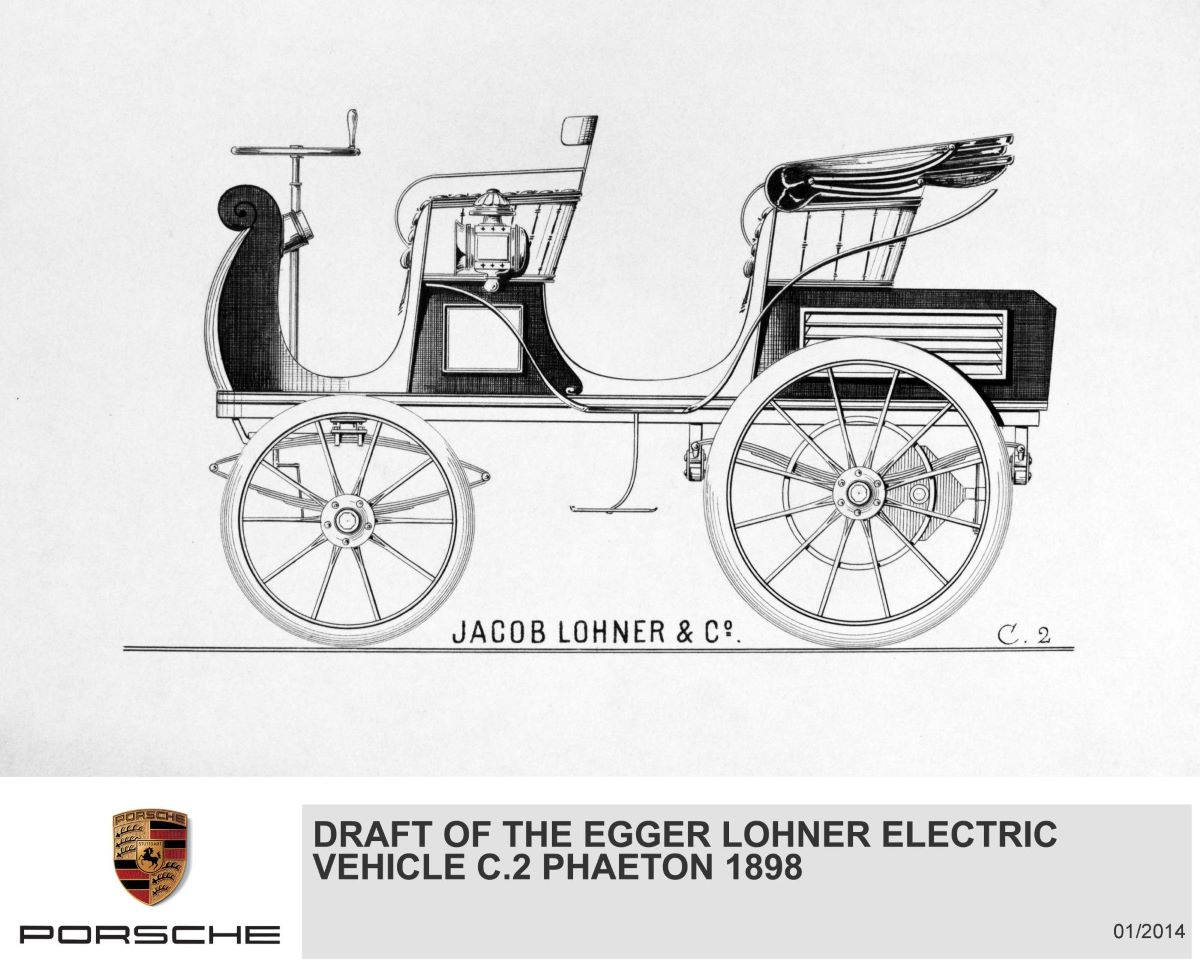
The first Porsche branded design was the Type 356 in the year 1948, but the very first vehicle designed by Ferdinand Porsche dates back to 1898 with the “Egger-Lohner electric vehicle, C.2 Phaeton model”, known as the “P1” for short. After 115 years, the original and unrestored “P1” has been recovered from a warehouse and untouched since 1902. It will be on permanent display at the Porsche Museum, which is celebrating its fifth anniversary.
Designed and built by 22-year old Ferdinand Porsche, the “P1” took to the streets of Vienna, Austria, on June 26, 1898. Young Ferdinand had engraved the code “P1” (standing for Porsche, number one) onto all of the key components, thus giving the electric vehicle its unofficial name. The highly compact rear mounted electric drive weighs 287 lbs. and produces 3 hp. For short periods, up to 5 hp could be achieved in overdrive mode allowing the P1 to reach speeds up to 21 mph. The vehicle speed was regulated via a 12-speed control unit and the overall range of the 2,977 lb. vehicle could span up to 49 miles. Another innovation was the Lohner alternating vehicle body, which was mounted on the wooden “chassis” and allowed the vehicle to be a coupe style or an open Phaeton design.
First testing of the “P1” was completed in September 1899 at the international motor vehicle exhibition in the German capital of Berlin. An all-electric vehicle race over a distance of 24 miles was announced in Berlin for September 28. With three passengers onboard, Ferdinand Porsche steered his “P1” across the finish line 18 minutes ahead of the next competitor. More than half the participants failed to finish due to technical problems. Ferdinand also came out on top in the efficiency competition, as the “P1” recorded the least amount of energy consumed.
Five years since the opening of the Porsche Museum in January 2009, the addition of the “P1” will be the centerpiece that introduces visitors to the first part of the newly structured product and motorsport history exhibition. It will bridge the gap between the past and present-day developments such as the Porsche 918 Spyder. The 918 Spyder follows the long tradition to be a technological benchmark that first started 115 years ago with the “P1”.
Technical Data “Egger-Lohner C.2 electric vehicle”
- Model year: 1898
- Wheelbase: 1600 mm
- Gross weight: 2,977 lbs.
- Battery weight: 1,103 lbs.
- Motor weight: 287 lbs.
- Units: approximately four units built
- Octagon electric motor with differential gear
- Motor shaft pinion (phosphor bronze) engages with the system of gears rings on internally toothed wheel hubs (cast steel)
- Continuous power of 3 hp; can be overloaded to 5 hp (40–80 volts)
- “Tudor system” 44-cell accumulator battery; 120 amp hours
- Stub axle front wheel steering
- Rear wheel drive with differential gear (with a transmission ratio of 1:6.5)
- Mechanical band brake and electrical short circuit brake
- Wooden wheels with pneumatic tires
- Cruise control: 12-speed controller
- Top speed: 21 mph
- Travelling speed: 15 mph
- Driving time: 3–5 hours
- Range: approx. 49 miles


You must be logged in to post a comment.